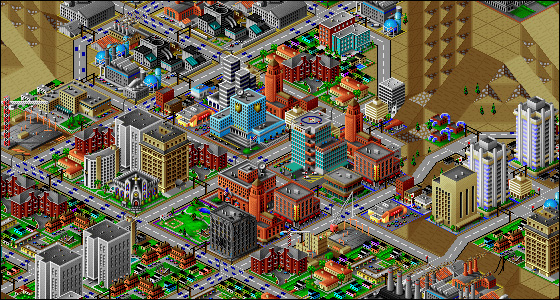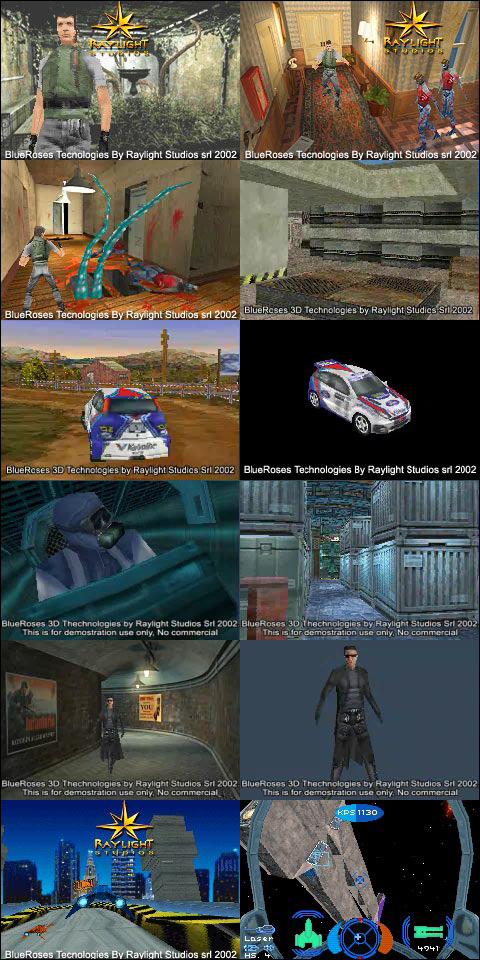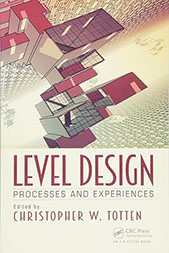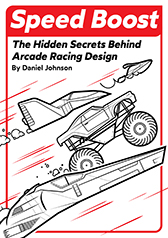Global Markets as The Next Casual Gaming-sized Phenomena
September 7th, 2009
 (This is another canned GameSetWatch column, I hope you enjoy.)
(This is another canned GameSetWatch column, I hope you enjoy.)
If 10 year product life cycles are anything to go by, then we’re perhaps a third of the way through this most recent generation of consoles. Over the past several years we’ve seen an unprecedented turning point for the industry in the form of audience expansion through the advent of casual gaming. While casual gaming will no doubt continue to embed itself as a norm of this industry, enjoying the many fruits of its labours, we can already see the swell forming for the next phenomena to succeed casual gaming and that is expansion to global audiences.
The Global Medium
Video games are hardly a global medium. Japan, America and “Europe” (includes Australia and New Zealand); the three regions where video games are most prominent in terms of shared distribution, only account for roughly 20% of the global population. Even between these divisions there remains a large disparity in available software. As an Australian player I cannot legitimately purchase PSone classics such as Metal Gear Solid, Resident Evil or Spyro the Dragon through the Playstation Network. As an American player, perhaps you don’t know very much about the classic Enix RPG Terrinigma? Nay we dare discuss Japan.
The other collective 70-80% of global population have their own individual market situations. Often the means to acquire games in such regions are more complex (although not necessarily illegal, as one might assume), shifting the market in multiple, intertwining ways. Despite the natural complications, games are often no less prominent and successful in such countries, even though software distribution is rather limited, particularly of the home consoles.
So then; the Difference
What separates a China, Korea or India from becoming a Japan, America or Europe in many cases is systems of trade and systems of localization which are much narrower. Although there is a degree of generalization (comes with the territory) the 70-80% figure can be divided into two groups which I have suitably dubbed “enclosed markets” and “one-way street markets”.

China and Korea (both separate and as a joint unity) represent the former (“enclosed markets”) very well. Both countries enjoy rich game industries which can be segregated in several components; the burgeoning development industry from the mainland, rampid piracy and importation of mostly western or Japanese product from neighbouring areas (ie. Hong Kong, Taiwan) and legal consoles and software (ie. iQue, DS Lite, Wii(Korea only)). The legal, mostly online-based industry lives off the pay-per-play/pay-for-necessity model and is a thriving market. With all of the illegal stuff being detached from the mainland (ie. most of what is pirated isn’t legally available anyways) and everything legal predominately existing only in China or Korea, the Chinese and Korean games markets are in this case self-sustaining.
Unlike the enclosed markets, many of the countries that would fall into the “one-way street market” category have little or no industry of their own. Whatever industry is present usually develops for the web. Common sense given development kits are tough to come by. Jamaica embodies these characteristics. As such, there is no recognised games industry in Jamaica and local distribution is either weak or non-existent. Never ones to let down though, keen Jamaican gamers import their games and consoles either from local import vendors or through the internet. Further, enthusiastic players and community leaders in the capital Kingston will pool together their resources to form community “arcades”. In these “arcades” players can pay to play the latest games, only a couple of months (or less) after the North American street dates. So, in contrast, one-way street markets have relatively small industries of their own and rely wholly on distribution from the outside.
Fixing This “Problem”
Everything I’ve just explained shouldn’t be treated as a “problem” or “issue”, because the reality is that there will never be such a thing as a “total” global market, and nor should we believe otherwise. Games are simply product after all, and product regulation varies per country, per culture. Games are also very subjective things and as people who live in culture which shapes our sensibilities, not every game is suitable for every market or every person. The success of Madden in the UK and Australia is indicative enough of that!
Instead, it’s all about access and distribution. There’s nothing that says players in Russia pirate video games simply because they’re Russian. Rather, there is no distribution model in place which satisfies the perception of value for Russian players. Further, illegal means can give access to certain content, but not all of it. If you provide people with a reasonable deal, there’s no reason for them to turn it down. The reasonable deal obviously must adhere to the cultural norms of the respective societies which is what will shape the consideration sets of the publishers of today and the future.
Old News
Reading this far you might be forgiven into thinking this is all rather current, which is to say that it isn’t! Global expansion is old news and has been quietly developing since the start of the industry. The same countries listed as examples were acquiring games, just as they do now, 15-20 years ago through similar, if not the same means. With this said though the industry is now the largest of all forms of entertainment and distribution continues to lose physicality, ensuring that major strides are all but imminent. The following initiatives are good examples of this;
In April Sony announced that it would be releasing six to seven new titles developed specially for an Indian market in partnership with local developers. On May 25th, Brazil released their own home console Zeebo, created for developing counties and soon to be exported elsewhere. Back in 2006 Nintendo opened a new Korean subsidiary with the DS Lite and Wii releasing in the respective years that followed – both consoles have seen significant success since.
Wishful Thinking?
There are two key factors that are and will continue to affect the global expansion of the video game industry in forthcoming decades. Those being the newfound modernization of countries such as China and India and the continual success and pervasiveness of the video game industry.
As suggested, the internet is a major contributor to the latter. Physical distribution, shipping and additional expenditure that comes with it can be completely avoided through distribution platforms which run over the internet. Every country that is able, already acquires games through the internet, so for publishers it’s only a matter of value proposition. The same can be said for development; the internet creates a viable market place for developers such as the few in Jamaica.
The tools are therefore already in place, with further advancements (such as streaming gameplay) on their way. The key problem then is having someone set up a system of access which provides attractive content at a good price point through a viable means. It’s not particularly easy to do in an industry with multiple consoles, established distribution streams and individual markets, but it’s worth considering. At least, that’s my prediction of where global distribution is heading.
Visual Connection – Raylight Studio’s Blue Roses GBA Tech
September 3rd, 2009
Raylight Studios is a small Italian games developer that unfortunately don’t have many high profile games to their name, besides a sadly woeful GBA port of Gradius III and a specialty in handheld racing games. As someone that enjoys maxed out handheld tech, I’m fascinated by this studio.
Some time after the GBA’s release (2002-ish) Raylight Studios showed off video and screenshots of a 3D game engine for the system, titled Blue Rose. The team had rendered a series of demos based on popular Playstation games such as Resident Evil, Wipeout, Metal Gear Solid as well as a series of others.
This was very exciting at the time as, at least on a surface level, it showed that the GBA was in fact capable of producing 3D graphics on a somewhat similar plane to the PSone. Mammoth potential for the emerging GBA. Background information such as memory constraints were fairly unknown, but it’s still nifty nonetheless. Unfortunately little eventuated from the project and the studio has gone on to product a handful of low-tier portable games, mostly racing games – their forte.
Considering how well the tech holds up in comparison to the DS, I figure it’s worth remembering their endeavours and pondering what might have been. I tried to get in contact with the studio but had no luck, so instead, let’s just look over what we have;
Resident Evil 2
Metal Gear Solid
Air Race (ie. Wipeout)
SRS: Street Racing Syndicate (appears to be using same tech, actually released)
Screenshots

Additional Readings
Unseen64 (Also good for these kinda bits-and-pieces games, prototypes etc.)
Linkout (24/8/09)
August 24th, 2009

Talk about dated! Some of the articles of reference here were posted months, possibly years ago. Okay, maybe I’m exaggerating a little. Still, despite my lack of timeliness this past month (3 months?) worth of links are quite good, I hope. I also decided to cull half the blogs in my feed reader due to a lack of time and a lack of authors actually discussing games. Narrative (secluded from gameplay), philosophy and unrelated anecdotes make for wonderful distractions, but are rarely ever insightful. You won’t find much of that here though;
Time Extend: Zelda – Majora’s Mask – EDGE
I linked to some writing about Majora’s Mask in my last Link Out post, but this is much better. The author here concentrates on a handful of elements that made Majora’s Mask such a unique play experience. They focus on the overarching friction that differentiates Majora’s Mask from Ocarina of Time, deeply rooting itself in melancholy emotions.
There was another fantastic Time Extend article on Prince of Persia: The Sands of Time which eloquently examined the game’s meta-narrative and purity.
China Bans Gold Farming!! … Er … But In Fact It Hasn’t
Back in June/July there were reports that the Chinese government had banned gold farming which were rather dubious in their backing. I’d read reports on Eurogamer and Kotaku (perhaps on Good Game too) which all featured the same headline, but the details simply didn’t justify the headline.
Gathering of Monster Hunters – guardian.co.uk
I’ve been very much intrigued by the Monster Hunter series as of late, particularly in the way Capcom is marketing the latest PSP title in Europe. They’ve began a self professed push to get PAL players into the series, and considering they give a damn about us, I can’t help but give one back. Although I didn’t think much of their Resident Evil 5 campaign of finding body parts scattered around London, this move highlights inventive consideration geared towards the PAL market, which can only be a good thing.
What They Play 18: Columbine 10th anniversary
The music in Return to Castle Wolfenstein is pretty meh, so throughout the romp I was exhausting a list of podcasts and eventually found myself listening to archived recordings from the site What They Play. The site is run by John Davidson and hence worthy of your respect and consideration, furthermore it’s a site targeted towards parents which sets the tone for some more mature discussion. The highlight of my run was podcast #18 regarding the 10th anniversary of the Columbine massacre. The conversation isn’t entirely related to video games but Columbine debate is interesting nonetheless.
Beyond Beeps: Michael Jackson’s Moonwalker – Press the Buttons
Like many I presume, I started listening to Michael Jackson again following his tragic passing. After hearing some of the Moonwalker (Megadrive) music on Retronauts I started hunting down the original sound files. Coincidentally in turned out Matt from Press the Buttons posted some music streams, so I just listened to those. Very cool.
SOCOM 4 and Syphon Filter 5 listed as in development
I don’t want be so trite as dare say this but; ’nuff said.
Tech Interview: WipEout HD/Fury – Eurogamer
Sometime ago Eurogamer started a feature titled Digital Foundry which has now been given its own blog. The segment originated as a dumping ground for those shallow Xbox 360/PS3 comparison videos and has now expanded into something a little more technically driven as the above interview with Wipeout developers Studio Liverpool showcases. I’ve completed the new Fury expansion and am yet to talk about it, so take a squiz here in the meantime, it’s an entertaining read.
Digital Foundry also did some similar work interviewing the folks behind Super Stardust HD, inside includes some choice pro-tips too.
Metroid Prime Trilogy Video Game, Developer’s Voice Featurette – GameTrailers.com
Metroid Prime Trilogy; what a great excuse to replay such a gorgeous selection of games. I’m currently attempting Metroid Prime 3 for the third time now, I haven’t finished it yet which is sadly disappointing. I have strong sentiments towards the series and therefore enjoyed this video piece.
And a bunch of Metal Gear comics…
Sometime ago I finished reading the comic series The Last Days of Foxhound which consists of 500 individual comics in a series format. I was surprised that I’d never heard of this series years ago. Furthermore, I recently found another, much smaller, bunch of hilarious Metal Gear comics. This series which summarises each of the MGS game is objectively superior to The Last Days of Foxhound but both are well worth a read for any fans. I really dig the way The Last Days of Foxhound covers its bases on the lead up to the Shadow Moses incident. How had I never seen these before?



 Game Design Companion: A Critical Analysis of Wario Land 4 - $7.99
Game Design Companion: A Critical Analysis of Wario Land 4 - $7.99 Level Design: Processes and Experiences
Level Design: Processes and Experiences Speed Boost: The Hidden Secrets Behind Arcade Racing Design - $5.99
Speed Boost: The Hidden Secrets Behind Arcade Racing Design - $5.99 Adventures in Games Analysis: Volume I - $5.99
Adventures in Games Analysis: Volume I - $5.99







